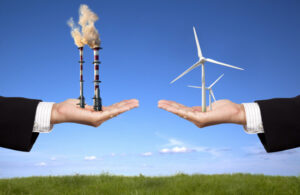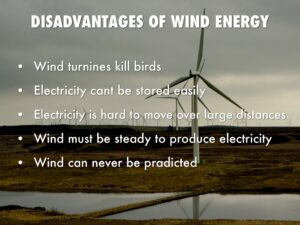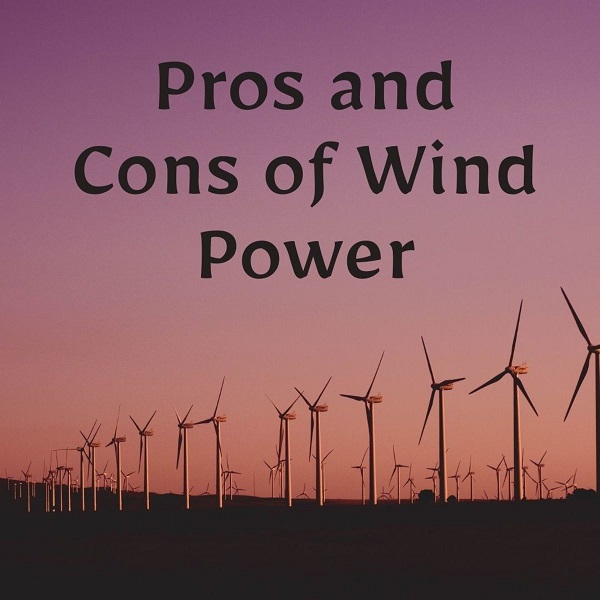Any mechanical energy produced by the wind or any other form of naturally occurring airflow is called wind energy. Wind energy may also refer to the energy stored in wind turbines. Like every other kind of energy source, wind energy has benefits and downsides. Wind energy is not an exception to this rule. The generation of power from wind turbines has a number of advantages and disadvantages, both of which will be discussed in this article.
Top Pros and Cons of Wind Energy
Wind power is not only one of the most frequent forms of renewable energy that can be found in the United States today, but it is also one of the sources of electricity that is seeing the greatest rate of expansion. Wind energy use has many positive effects on the surrounding ecosystem; however, there are also a few drawbacks. The following are some of the most important benefits and drawbacks:
Pros and Cons of Wind Energy
Pros of Wind Energy
- A sustainable and eco-friendly power option
- Little costs of operation
- Effective use of available land area
- The development of wind power results in the creation of new jobs.
Cons of wind energy
- Intermittent
- Pollution caused by both sound and light
- Some unfavorable environmental effects
- Wind power is difficult to get.
On the plus side, wind power is not only an environmentally friendly and renewable source of energy but also one of the least expensive ways to generate electricity. Wind turbines may be loud and unattractive to look at, and they can occasionally negatively influence the physical environment surrounding them. These are some of the disadvantages of using wind energy. Much like solar power, wind power is an intermittent kind of energy. This means that the turbines that generate electricity from wind power are dependent on the weather and so are unable to provide electricity around the clock.

Benefits of Wind Energy
Wind Power Is Both Sustainable and Environmentally Friendly
The production of electricity from wind, in contrast to the production of electricity from coal, natural gas, or oil, does not result in the generation of greenhouse gases. Wind turbines do not need the combustion of any fossil fuels in order to function after they have been installed and brought online, even though the construction of big wind farms does come with a few environmental problems.
In addition, the energy harvested from the wind is fully renewable and has an infinite supply. The wind is a natural occurrence in our atmosphere, and its supply is not something we will need to be concerned about in the foreseeable future. This contrasts to typical fossil fuel supplies, which regenerate extremely slowly.
The Development of Wind Power Results in The Creation of New Jobs
In the United States, the industry that is most rapidly expanding in terms of employment creation is the one that involves wind energy. There are already more than 100,000 people working in the industry, and it has the potential to sustain more than 600,000 people over the next several years.
Costs of Operation for Wind Energy are Quite Cheap
In terms of the initial investment required, the construction of wind farms or individual turbines may be rather pricey. However, once they are operational, the operating expenses are quite minimal; their fuel (wind) is free, and the turbines do not need excessive maintenance over the course of their lifespan.
Wind Energy Makes Optimal Use of Available Space
Wind farms may use a significant amount of land when taken as a whole, although the turbines and other equipment don’t take up a significant amount of area on their own. Because of this, property on which wind turbines are situated may often be repurposed for other activities as well, including agriculture.

Disadvantages of Wind Energy
Wind Energy Is Intermittent
Because the ability of a wind turbine to effectively produce energy relies on the weather, it may be challenging to precisely anticipate the amount of power that a wind turbine will create throughout the course of its lifetime. The wind turbine’s rotor won’t turn on any given day if the wind speeds are too low for it to do so.
This indicates that wind energy may not always be available for dispatch during times of high demand for power. Wind turbines will need to be linked with an energy storage device of some kind in order for humanity to be able to rely only on wind power.
Noise and Visual Pollution are Both Caused By Wind Energy
Noise and visual pollution is one of the most significant drawbacks associated with the use of wind energy. The mechanical functioning of wind turbines and the wind vortex that is generated while the blades are revolving may contribute to the noise these machines produce when they are in operation. Wind turbines have the potential to be an eyesore in otherwise beautiful environments, such as mountain ranges, lakes, seas, and other natural features, due to the fact that they need to be constructed at a height that allows them to collect a sufficient quantity of wind.
Wind Turbines are Known to Have Various Unfavorable Effects on The Environment Around Them
A wind turbine’s blades are massive and revolve at breakneck speeds. Birds and bats are two examples of flying animals that might be injured or killed by the blades if they collide with them. If not done in an environmentally responsible way, the development of wind farms can negatively impact local animals’ natural habitats. The development of new technologies and the strategic placement of wind farms, on the other hand, may make it possible to alleviate some of these issues.
Wind Power Is Not Readily Available
Transmission is necessary for the use of wind energy. In many instances, turbines and generating sites may be situated a considerable distance away from population areas that have a need for electrical power. As a result, the construction of transmission lines is an extra component of the infrastructure that must take place in order for this method of energy production to be effective.

